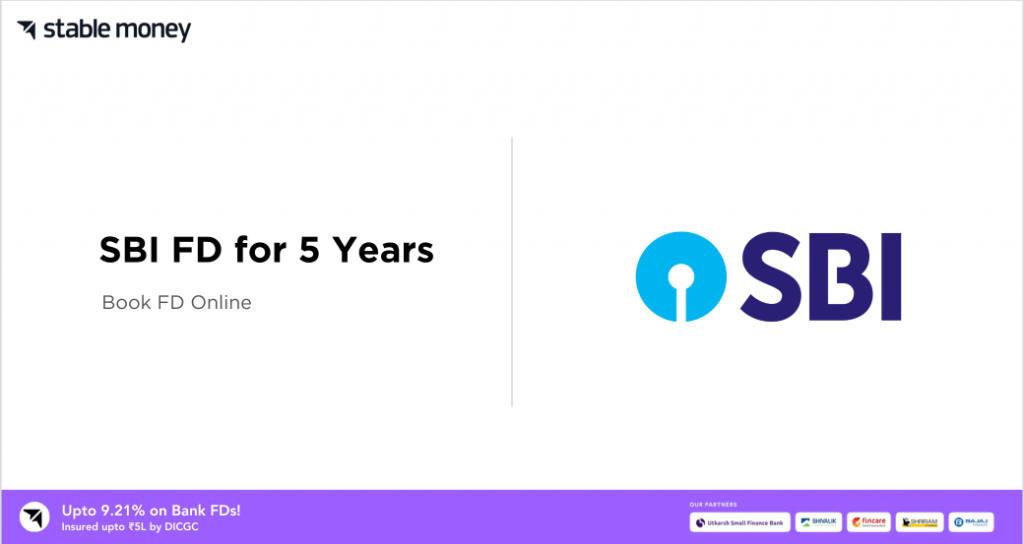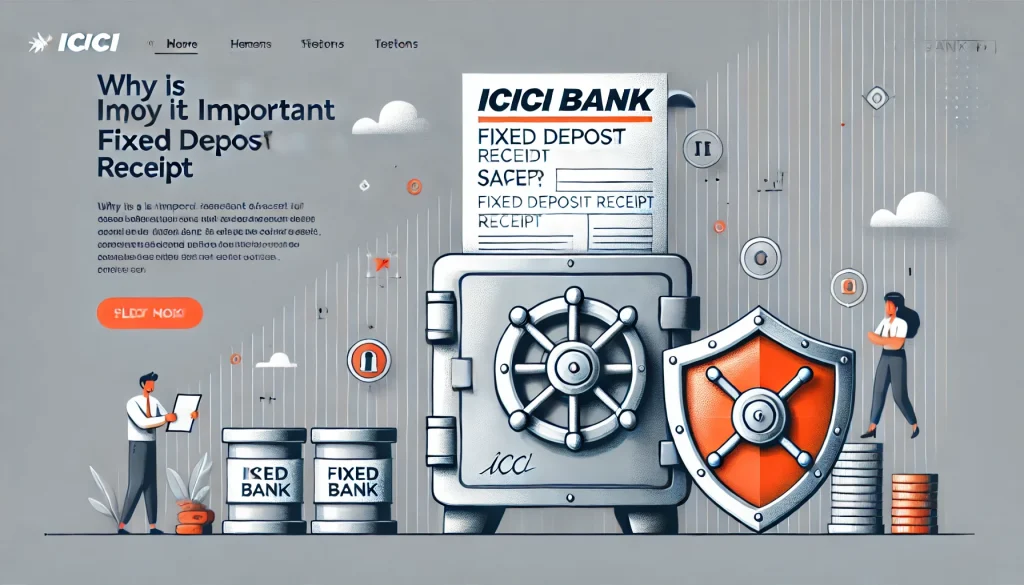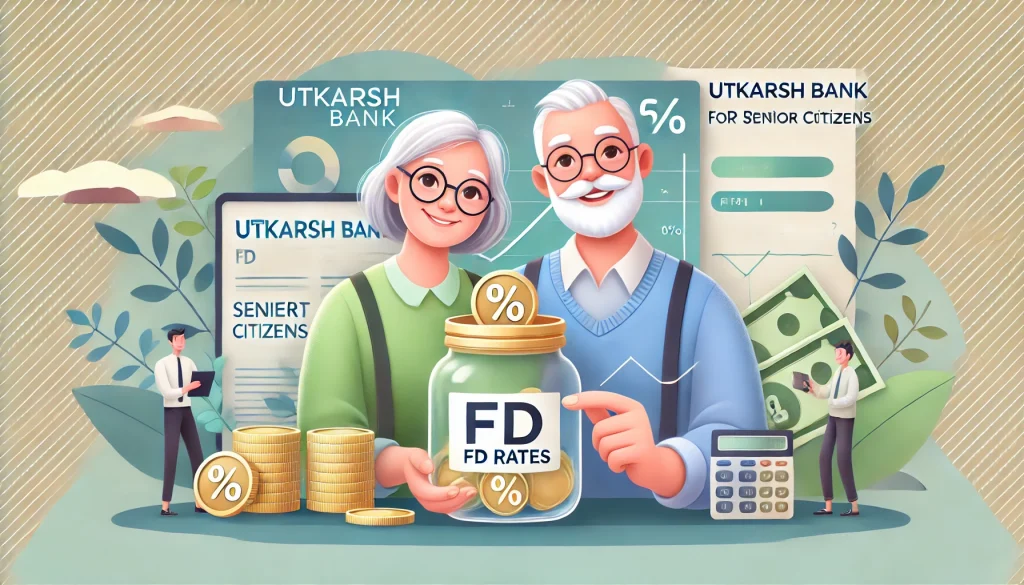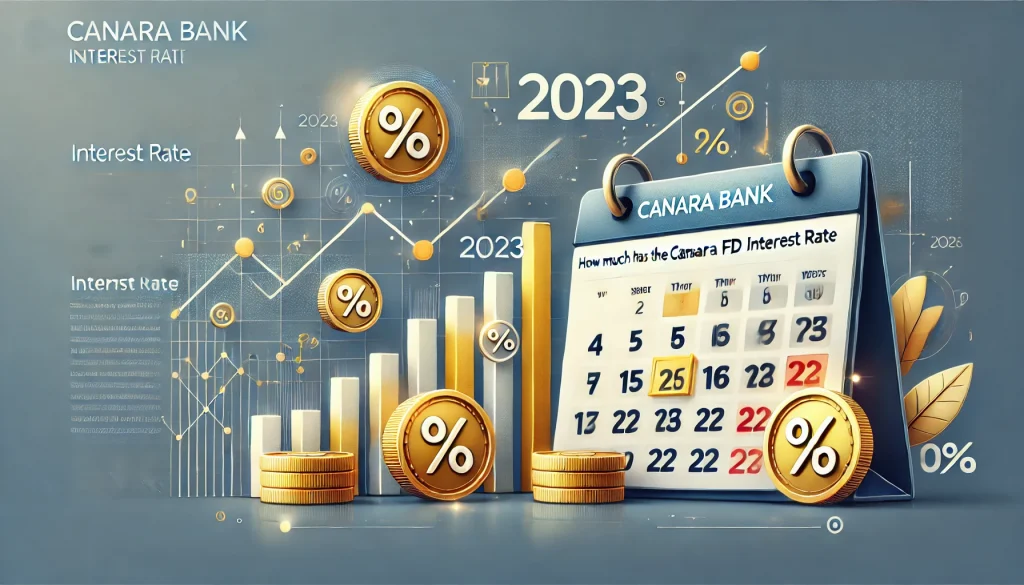
The 5-year SBI Fixed Deposit (FD) offers investors security and consistent returns. SBI, India’s largest and most trusted public sector bank, promotes wealth preservation and growth. The SBI FD for 5 years period and low-interest rates make it appealing. FDs provide deposit loans and wealth transfer nominations. Financial investors may balance stability, liquidity, and growth with SBI’s tax-linked 5-year FD.
About 5 year SBI FD
SBI’s 5-year Fixed Deposit (FD) is a secure and stable wealth-building instrument. Top Indian public sector bank SBI provides good financial services. With its defined length and fd interest rates in sbi for 5 years, the 5-year FD enables investors to lock in their money for an extended period. Long-term financial planners seeking reliable profits should use this investing approach. SBI helps consumers fulfill their goals with monthly to annual interest distributions. Premature withdrawal may result in sanctions, demonstrating tenure commitment. Financial planners like FDs for deposit loans and nominations. The SBI 5 years fixed deposit interest rate addresses tax-conscious investors’ stability, liquidity, and growth demands.
SBI FD for 5 years Interest rate
You will find a variety of fixed deposit (FD) schemes for different tenures and SBI 5yrs FD interest rate. For a 5-year tenure, SBI offers the following interest rates:
- General public: 6.50% p.a.
- Senior citizens (aged 60 and above): 7.50% p.a.
These 5 year FD interest rates in sbi are applicable for deposits below Rs. 2 crore. The interest rates are slightly lower for deposits above Rs. 2 crore.
Features and Benefits of SBI FD for 5 years
The SBI FD rates 5 years offers several features and perks, making it an appealing investment for consumers. Some significant characteristics and advantages
- Competitive Interest Rates: SBI provides 5-year Fixed Deposits with favorable rates, offering investors a stable income.
- Fixed Tenure: FD for 5 years in SBI provides stability and predictability for long-term investment planning.
- Flexible Interest payments: Investors may pick monthly, quarterly, or yearly payments to meet their financial demands.
- Premature Withdrawal Option: SBI allows for early withdrawal, notwithstanding a set duration. A lower interest rate may be imposed.
- Investors may use loans against their SBI fd 5 years to acquire liquidity without prematurely breaking the deposit.
- Nomination Facility: SBI enables investors to name beneficiaries, facilitating easy transfers in unexpected situations.
- Tax Implications: FD interest is taxable under income tax legislation. When investing, investors should consider taxes.
- As a government-owned bank, SBI rate of interest on FD for 5 years offers excellent investment safety and security, protecting investors’ foremost amounts.
- Ease of Investment: SBI offers a simple FD opening procedure, with handy channels, including internet banking and branches.
- Stable Returns: The 5-year SBI FD offers predictable returns with a set interest rate throughout the lifespan, ideal for risk-averse investors.
Investors can choose between cumulative (interest compounded) and non-cumulative (interest distribution at regular intervals) alternatives according to their preferences.
How to invest in SBI FD for 5 years?
You can invest in an SBI FD for 5 years through two main methods:
1. Online:
- YONO SBI App: Existing SBI customers may open FDs using the app. Download the app, log in, then go to “Investments”. Open an FD and pick the duration, interest payment frequency, and investment amount.
- SBI Internet Banking: Open FD online using an SBI savings account, similar to the YONO app. Go to “Deposits” on your online banking interface and choose “Fixed Deposit.” Choose your account, duration, interest payment frequency, and investment amount.
2. Offline:
• Take KYC paperwork (PAN card, ID evidence, address proof) to your local SBI bank. Fill out the SBI FD application with your selected tenure, interest payment frequency, and investment amount. Include a check or cash for your investment with the form.
Additional things to keep in mind:
- You can choose from monthly, quarterly, half-yearly, or yearly interest payout frequencies.
- SBI offers a higher interest rate for senior citizens (aged 60 years and above).
- The minimum deposit amount for SBI FDs is Rs. 1,000.
- Premature withdrawal penalties apply if you withdraw your money before the maturity date.
If you want to know more about SBI interest rate on fd for 5 years, simply visit their website.
Eligibility to Open an SBI FD for 5 years
Here are the categories of individuals and entities eligible to open an SBI FD for 5 years:
1. Individuals:
- Resident Indian citizens: Individuals holding Indian citizenship can open an SBI FD.
- Non-Resident Indians (NRIs): NRIs can also open FDs with SBI, but they need to do so through their NRE (Non-Resident External) or NRO (Non-Resident Ordinary) accounts.
- Minors: Minors can open an FD jointly with a parent or guardian.
2. Organizations:
- Partnership firms: Registered partnership firms can open FDs with SBI.
- Hindu Undivided Families (HUFs): HUFs, a family structure recognized under Indian law, can also open FDs.
- Societies: Registered societies, such as clubs or associations, can open FDs.
- Trusts: Charitable or religious trusts can open FDs with SBI.
- Companies: Both public and private limited companies can open FDs.
Key Points:
- PAN Card: A valid PAN card is mandatory for all individuals and entities opening an FD, per KYC (Know Your Customer) regulations.
- Minimum Deposit: The minimum deposit amount for an SBI FD is Rs. 1,000.
- Joint Accounts: Joint FD accounts can be opened with two individuals or entities.
Documents Required to Open SBI FD for 5 years
Here are the documents required to open an SBI FD for 5 years:
1. For Individuals:
- Proof of Identity (any one of the following):
- Aadhaar Card
- PAN Card
- Voter ID Card
- Passport
- Driving License
- Proof of Address (any one of the following):
- Aadhaar Card
- Passport
- Voter ID Card
- Driving License
- Latest Bank Statement with Cheque
- Utility Bill (not older than 3 months)
- Passport-sized photographs (2-4)
2. For Minors:
- Birth Certificate of the minor
- Guardian’s ID and address proof (as mentioned above)
3. For Organizations:
- Certificate of Registration
- Board Resolution authorizing the opening of FD
- Identity and address proof of authorized signatories
Additional Documents (if applicable):
- Form 60 or Form 61 (if PAN card is not available)
- Senior Citizen Certificate (for those aged 60 or above)
Tax on SBI FD for 5 years
Here’s a simplified breakdown of tax liabilities for different scenarios:
| Scenario | Tax Benefit | Interest Taxable | TDS Applicability |
| Regular FD | No | Entire interest income | Yes, if interest exceeds Rs. 40,000 |
| Tax-Saving FD (up to Rs. 1.5 lakh) | Section 80C deduction | Entire interest income | Yes, if interest exceeds Rs. 40,000 |
| Tax-Saving FD (above Rs. 1.5 lakh) | No | Entire interest income | Yes, if interest exceeds Rs. 40,000 |
| Senior Citizen (Regular FD) | Section 80TTB deduction | Interest exceeding Rs. 90,000 | Yes, if interest exceeds Rs. 50,000 |
| Senior Citizen (Tax-Saving FD) | Section 80C & 80TTB deductions | Interest exceeding Rs. 1.40 lakh | Yes, if interest exceeds Rs. 90,000 |
Remember, these are simplifications. Your tax liability might differ depending on your specific circumstances and total income. Consulting a tax advisor for personalized guidance is always recommended.
How to Calculate SBI FD for 5 years Interest Rate
Calculating the return on your fixed deposit interest rates for 5 years in SBI depends on whether you prefer simple or compound interest:
1. Simple Interest:
This is the easiest method and is suitable for understanding basic returns. The formula is:
Maturity Amount = Principal + (Principal * Interest Rate * Tenure)
Where:
- Principal: The amount you invest.
- Interest Rate: The annual interest rate offered by SBI (e.g., 6.50% for the general public, 7.50% for senior citizens).
- Tenure: The duration of the FD in years (5 years in this case).
For example, if you invest Rs. 1,00,000 for 5 years at 6.50% interest, your maturity amount would be:
Maturity Amount = 1,00,000 + (1,00,000 * 6.50% * 5) = Rs. 1,32,500
2. Compound Interest:
This method considers that you earn interest on both the principal amount and the accumulated interest over time. The formula is:
Maturity Amount = Principal * (1 + Interest Rate)^Tenure
Using the same example as before:
Maturity Amount = 1,00,000 * (1 + 0.065)^5 = Rs. 1,37,069.44
As you can see, compound interest offers slightly higher returns than simple interest over longer tenures.
Additional factors:
- Tax Deductible Savings FD: If you invest up to Rs. 1.5 lakh in a specific SBI Tax-Saving FD, you can claim a deduction under Section 80C of the Income Tax Act. However, the interest earned on such FDs is fully taxable.
- Premature Withdrawal: Withdrawing your FD before maturity may incur penalty charges, impacting your overall return.
Final Word
The SBI FD for 5 years Fixed Deposit is a good investment for stability and guaranteed earnings. SBI is a trusted public sector bank; therefore, investors may trust their cash. Long-term wealth development is advantageous with competitive FD interest rates. The FD interest rates in SBI for 5 years, flexibility in interest payment frequencies, early withdrawal (with penalties), and FD loans make this investment versatile. The nomination function improves security and ensures seamless financial transfers to recipients in unexpected situations. Before choosing the 5-year FD, investors should consider the tax consequences on interest collected and their financial objectives.
FD rates in SBI for 5 years is ideal for risk-averse investors with long-term goals. It balances stability, liquidity, and growth in the changing financial planning environment. Prospective investors should evaluate SBI’s current terms, interest rates, and conditions for the most updated information.
FAQs
People who are eligible for this scheme include Indian residents and joint Hindu families with a PAN (Permanent Account Number)
You can use an overdraft, current, or savings account for this purpose. However, it is necessary to ensure that the account you wish to use is active.
No, in this case, only the first depositor will be able to receive the tax benefits under Section 80C.
The maturity amount gets credited to the account from which a depositor deposits their FD.
A depositor can collect it from their home branch of SBI. This is the only procedure to collect a tax-saver account receipt as it cannot be collected online through internet banking.
Disclaimer
This article is solely for educational purposes. Stable Money doesn't take any responsibility for the information or claims made in the blog.


